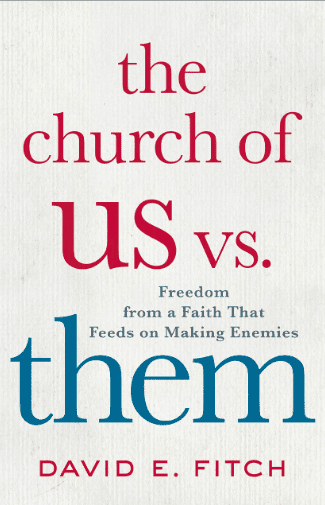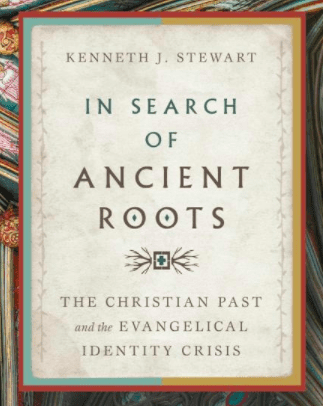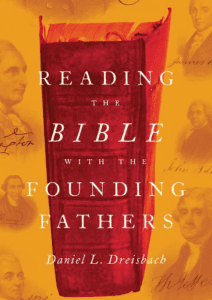
One of the most significant questions for Protestants, and perhaps for other Christians as well, is the view of scripture as inspired by God. A significant class of problems involved in the discussion of science and the Christian faith hinge on the interpretation of scripture. In fact those of us who accept both the empirical conclusions of mainstream science, if not the metaphysical ones, are often accused of throwing the bible under the bus. The issues of creation, age of the earth, origin of death, extent of the flood, and identity of Adam are frequently at the fore.
But the problems raised by a view of scripture as “inerrant” in all it claims extend far beyond the relationship with science. It is not enough to say about any passage that it sounds like history – therefore it is historical and take that declaration of history to require a reporter like account. Nor is it enough to declare that a passage “reads like” history or has been interpreted in the past as history. Consider for example the story of the fig tree.
In Matthew 21 we read that Jesus enters Jerusalem in triumph, cleanses the Temple, and then Leaves the city to spend the night in Bethany. Then in verses 18-22
Early in the morning, as Jesus was on his way back to the city, he was hungry. Seeing a fig tree by the road, he went up to it but found nothing on it except leaves. Then he said to it, “May you never bear fruit again!” Immediately the tree withered.
When the disciples saw this, they were amazed. “How did the fig tree wither so quickly?” they asked.
Jesus replied, “Truly I tell you, if you have faith and do not doubt, not only can you do what was done to the fig tree, but also you can say to this mountain, ‘Go, throw yourself into the sea,’ and it will be done. If you believe, you will receive whatever you ask for in prayer.”
This certainly reads like history, and in fact I see no reason to doubt that it recounts a historical event. But what does this mean?
The same series of events in Mark 11 are chronologically different. Jesus enters Jerusalem in triumph, looks around the temple and leaves to spend the night in Bethany. Then in verses 12-14
The next day as they were leaving Bethany, Jesus was hungry. Seeing in the distance a fig tree in leaf, he went to find out if it had any fruit. When he reached it, he found nothing but leaves, because it was not the season for figs. Then he said to the tree, “May no one ever eat fruit from you again.” And his disciples heard him say it.
Jesus enters Jerusalem, cleanses the temple and leaves the city for the night. We pick up the story in verses 20-25:
In the morning, as they went along, they saw the fig tree withered from the roots. Peter remembered and said to Jesus, “Rabbi, look! The fig tree you cursed has withered!”
“Have faith in God,” Jesus answered. “Truly I tell you, if anyone says to this mountain, ‘Go, throw yourself into the sea,’ and does not doubt in their heart but believes that what they say will happen, it will be done for them. Therefore I tell you, whatever you ask for in prayer, believe that you have received it, and it will be yours.
This is not a minor difference. Either the fig tree withered before their very eyes or it did not. It did not do both. I have not suddenly discovered a new issue, the problem of the fig tree is well known. The problem of the fig-tree is discussed at length, for example, in this article on Inerrancy and New Testament Exegesis by R.T. France. Did the fig tree wither immediately as the disciples watched or did they find it withered the next day? Does it matter?
If the chronology matters we are left with several possibilities, either Matthew erred, Mark erred, the text of one or the other has been corrupted (preserving inerrancy in the original manuscripts), or the entire set of incidents happened more than once. The last explanation is a bit far-fetched.
France comments following the description of this and other problems:
No doubt many refinements ought to be made to these very bald summaries of a few problem areas, but I hope enough has been said to illustrate the point that a study of the Gospel texts themselves indicates that chronology was not always the governing factor in the arrangement of the material. … If that is so, then our understanding of inerrancy in this connection must surely be governed by the intention with which the Gospels were written. A non-chronological arrangement is only an ‘error’ where the aim was to present a strictly chronological account. We should not put to the biblical text questions it was not designed to answer, and then chide it for getting them wrong.
A high view of scripture requires that we take the text as it is. We approach the text not as judges or as critics but as students. As students we are not asking if a text is true or false, but questions about the genre, intent, form, and message of the text. The authors of scripture, both the old and the new testament, felt free to embellish stories, rearrange details, and structure the data to convey a meaning appropriate to a given context and to make a theological point. A non-chronological embellished account of an incident is not an error in scripture, but a piece of data that informs our understanding of what it means for scripture to be inspired of God and perhaps a clue to the intended message.
Whither the Wandering Saints? Another text that has led to some controversy of late is Matthew 27:52-53, here in context of 50-54:
And when Jesus had cried out again in a loud voice, he gave up his spirit. At that moment the curtain of the temple was torn in two from top to bottom. The earth shook, the rocks split and the tombs broke open. The bodies of many holy people who had died were raised to life. They came out of the tombs after Jesus’ resurrection and went into the holy city and appeared to many people. When the centurion and those with him who were guarding Jesus saw the earthquake and all that had happened, they were terrified, and exclaimed, “Surely he was the Son of God!”
Michael Licona in his book The Resurrection of Jesus suggested that the language about the raised saints was apocalyptic symbolism with no corresponding literal events. This isn’t a matter of error in the text. It is a matter of reading the text accurately according to its genre and the conventions under which the author wrote to communicate to his immediate audience. This suggestion incited no little controversy and cost Dr. Licona his job and a number of speaking engagements. A perfect example of evangelical lunacy (my personal opinion).
In a recent roundtable discussion of this controversy, which I happened upon through a post by Michael Bird, the question is posed to Dr. Licona:
Dr. Licona, is it not better to understand the description in Matt. 27:52-53 simply as a historical description of what happened at the moment of Jesus’ death?
Dr. Licona responded:
Not necessarily. The “better” way to understand Matthew’s description of the raised saints is the way Matthew intended for them to be understood. If they are an apocalyptic symbol or poetic device, interpreting them in a literal-historical sense, that is, to “historicize” them, could lead one to misinterpret what Matthew was actually saying.
…
Since there are decent reasons for interpreting the raised saints as apocalyptic symbols, we ought to be slow to demand that one interpret them in a particular sense. The key question here pertains to how Matthew intended his readers to understand the raised saints. This must be thoroughly addressed prior to any charge that I have, or anyone holding a similar position has, “dehistoricized” them. For that charge presupposes that Matthew intended for them to be understood in a literal-historical sense.
Mike Bird, in an earlier post on the controversy noted:
In my chapter about the resurrection in How Did Christianity Begin: A Believer and Non-Believer Examine the Evidence, co-authored with James Crossley (London: SPCK, 2008/ Grand Rapids, MI: Baker, 2010), I said in a footnote about Matt. 27.51-53: “My understanding of this text is that it is not historical and it blends the present and the future together so that Matthew provides a cameo of the future resurrection at the point of Jesus’ death to underscore its living-giving power” (p. 69, n. 30). That was my off-the-cuff thought, but I stand by it, since Matt. 27.51-53 is a strange story that is reported nowhere else in Christian or non-Christian literature.
Again, we approach the text not as judges or as critics but as students. As students we are not asking if a text is true or false, but questions about the genre, intent, form, and message of the text. As Dr. Licona points out, if Matthew used apocalyptic symbolism to make a point, we err, although perhaps not seriously, if we interpret the text too literally.
I would like to use these two examples, the cursing of the fig tree and the raising of the saints, along with other examples anyone cares to raise, to consider the issues of inspiration and authority of scripture. Authorial intent is not the only concern, but it is a major concern.
To what extent should authorial intent inform our understanding of scripture?
How do we determine the intent of the authors and the message they intend to convey?
What would constitute an error that undermines the authority of scripture?
If you wish to you may contact me directly at rjs4mail[at]att.net.
If interested you can subscribe to a full text feed of my posts at Musings on Science and Theology.















